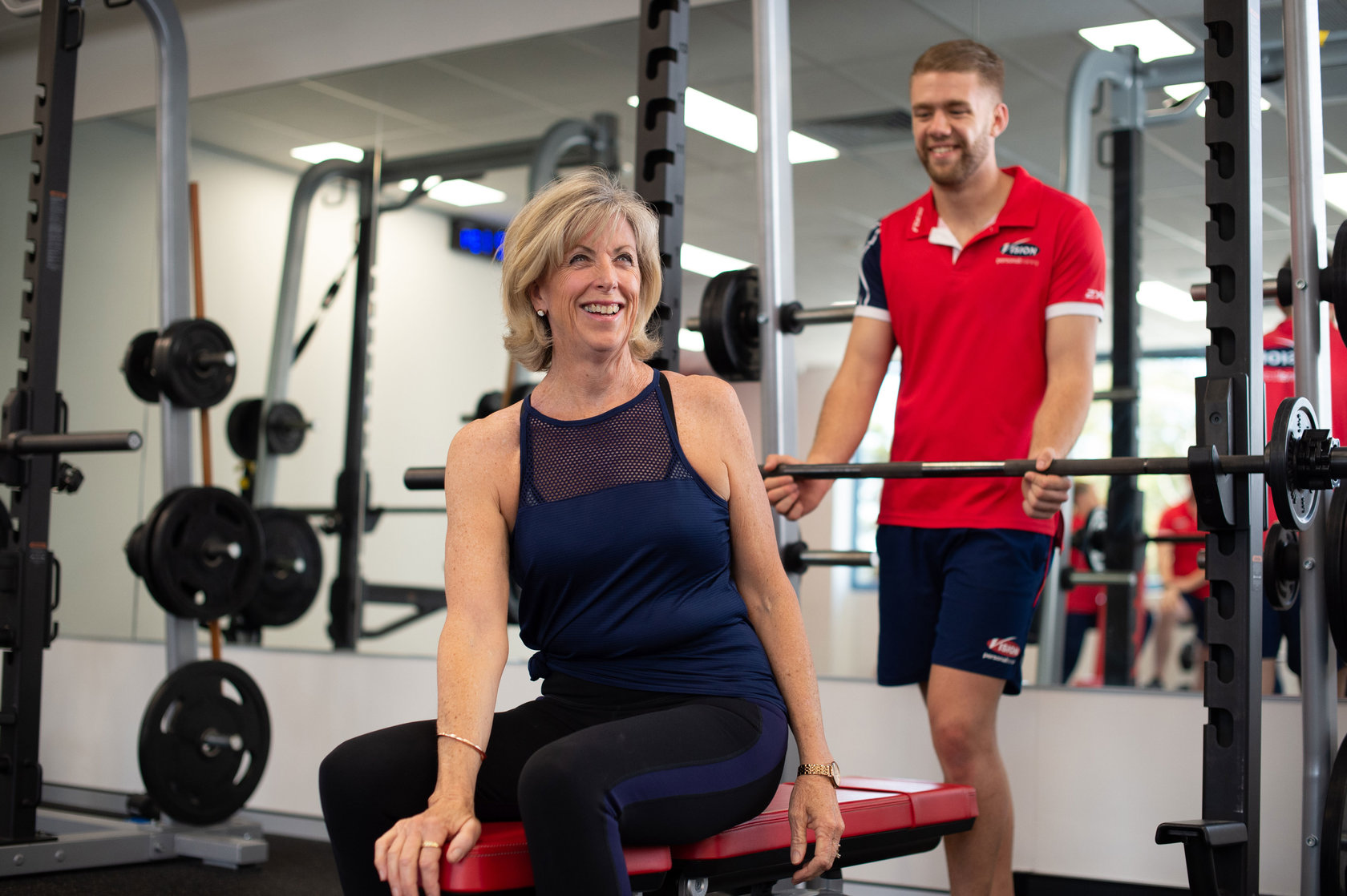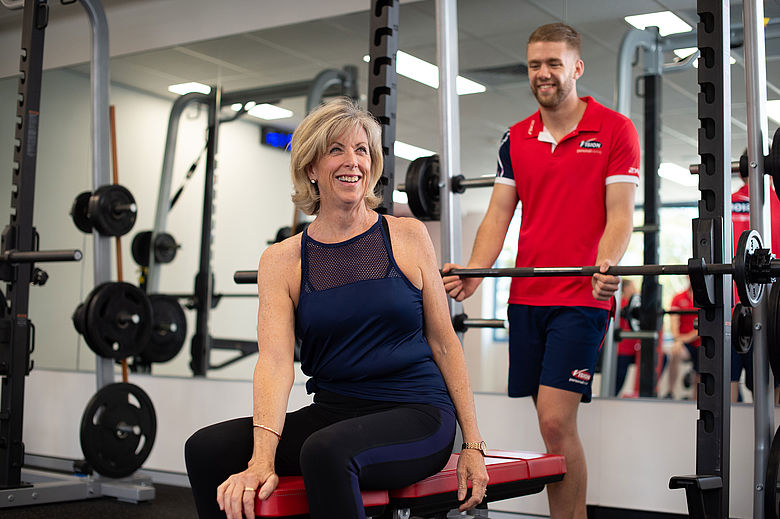FAT!
Don't be scared of it…
You actually need it in your diet.
Fat doesn't directly make you "fat" - excess energy consumption makes you "fat". It's about getting the right balance.
Fat has had bad press, to the extent that some foods are designed and marketed as 'fat-free'. But fats are not what we are led to believe. In fact, consuming the right fats in our diet is vital to our health.
Fats - either from food or from the body's fat store - help us survive. They are needed for our bodies to grow, develop and function correctly.
So, what exactly does fat do?
It provides us with;
- A source of energy - Our body uses the fat we eat, and fats we make from other nutrients in our bodies, to provide the energy for most of our life-functions.
- Reserve Energy stores - The extra calories that we consume, but do not need to use immediately, are stored for future use in special fat cells (adipose tissue).
- Essential fatty acids - Dietary fats that are essential for growth, development and cell functions, but cannot be made by our body's processes.
- Proper functioning of nerves and brain- fats are part of myelin- a fatty material, which wraps around our nerve cells so that they can send electrical messages. Our brains contain large amounts of essential fats.
- Maintaining healthy skin and other tissues - All our body cells need to contain some fats as essential parts of cell membranes, controlling what goes in and out of our cells.
- Transporting fat-soluble vitamins- Without Essential fatty acids we cannot transport vitamins A, D, E and K through the bloodstream to where they are needed.
But what about the different types of fats?
For long-term health, some fats are better than others. We categorize them into 3 categories know as Saturated, Unsaturated and Trans Fats. So, let's see where they lie in the scale from good to bad.
The Good fats
Good fats come mainly from vegetables, nuts, seeds, and fish. There are two broad categories of beneficial fats: monounsaturated and polyunsaturated fats.
Monounsaturated fats - Good sources of monounsaturated fats are olive oil, peanut oil, canola oil, avocados, and most nuts, as well as high-oleic safflower and sunflower oils. So when you dip your bread in olive oil at an Italian restaurant, you're getting mostly monounsaturated fat
Polyunsaturated fats - Polyunsaturated fats are essential fats. That means they're required for normal body functions but your body can't make them. So you MUST get them from food. Polyunsaturated fats are used to build cell membranes and the covering of nerves. They are needed for blood clotting, muscle movement, and inflammation.
There are two main types of polyunsaturated fats: omega-3 fatty acids and omega-6 fatty acids.
Eating polyunsaturated fats in place of saturated fats or highly refined carbohydrates reduces harmful LDL cholesterol and improves the cholesterol profile. It also lowers triglycerides.
Good sources of omega-3 fatty acids include: fatty fish such as salmon, mackerel, and sardines, flaxseeds, walnuts and canola oil.
Foods rich in Omega-6 fatty acids include: vegetable oils such as safflower, soybean, sunflower, walnut, and corn oils.
The In-between fats
Saturated fats are common in the Australian diet. Common sources of saturated fat include red meat, whole milk and other whole-milk dairy foods, cheese, coconut oil, and many commercially prepared baked goods and other foods.
Is saturated fat bad for you? A diet rich in saturated fats can drive up total cholesterol, and tip the balance toward more harmful LDL cholesterol, which prompts blockages to form in arteries in the heart and elsewhere in the body. For that reason, most nutrition experts recommend limiting saturated fat to less than 10% of your calories a day.
The Bad fats
The worst type of dietary fat is the kind known as trans fat. It is a byproduct of a process called hydrogenation that is used to turn healthy oils into solids and to prevent them from becoming rancid.
Early, in the 20th century, trans fats were found mainly in solid margarines and vegetable shortening. As food makers learned new ways to use partially hydrogenated vegetable oils, they began appearing in everything from commercial cookies and pastries to fast-food French fries.
Eating foods rich in trans fats increases the amount of harmful LDL cholesterol in the bloodstream and reduces the amount of beneficial HDL cholesterol. Trans fats create inflammation, which is linked to heart disease, stroke, diabetes, and other chronic conditions. They contribute to insulin resistance, which increases the risk of developing type 2 diabetes. Research from the Harvard School of Public Health and elsewhere indicates that trans fats can harm health in even small amounts: for every 2% of calories from trans fat consumed daily, the risk of heart disease rises by 23%.
Trans fats have no known health benefits and there is no safe level of consumption.
So, if some fats are so good why do I need to control how much I eat?
If we look at weight management, we need to balance how much energy we consume with how much energy we expend. If we consume too much energy and are not exercising, inevitably we will gain weight.
Fat contributes twice as much energy, gram for gram, compared to carbohydrate and protein. So, for people who eat high-fat diets and who are inactive they regularly exceed their energy needs and as a result, they gain weight. Because fat boosts energy intake, cutting fat from the diet can be an effective strategy in cutting energy intake.
What are my current recommendations related to fats in the diet?
You may be asking, how much fat is too much fat for me?
Well this question depends upon calculating your specific macronutrient requirement. For example, understanding your body's specific requirements involves a simple process, which is:
- Calculating fat free mass
- Calculating body type
- Calculating activity level
- Identifying your goal
If you need more advice on how this all fits in to your lifestyle, here at Vision Personal Training, we do it the right way. Our job as Personal Trainers is to help you identify your goals and provide you with a tailored solution that is easy to achieve and, more importantly, easy to maintain.
As part of your journey to self-transformation, your Trainer will design you an individual Nutrition Plan, which lays it all out on a plate.
Contact us today and book your free Initial Consultation.
Cameron Bartlett - Vision Personal Training Surrey Hills
*Disclaimer: Individual results vary based on agreed goals. Click here for details.
